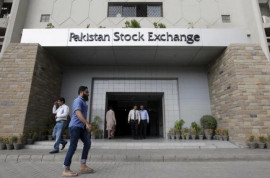
A Pepco spokesman later said in an official statement that under the contract, the first consignment of CFLs (or energy savers, as they are commonly known) will be delivered to 36 warehouses all over the country within 12 weeks, while free distribution of the energy-efficient lamps to consumers will start soon after the delivery.
Total cost of this project comes to around Rs2.8 billion, which will be funded by the Asian Development Bank and L’Agence Française de Développement (AFD) of France. The Ministry of Water and Power will oversee overall project management and Pepco will act as project coordinator; whereas distribution companies and the Karachi Electric Supply Company will act as executers.
Elaborating upon features of the contract, the spokesman said that the cost per energy saver is Rs140 including insurance, freight charges to final destination, cost of containers, and inland transportation and port handling charges. The life of every CFL is 10,000 hours with a two years warranty, whereas the market price of Philips’ CFLs is Rs189 with a life of 8,000 hours and one year warranty only. The price differential is expected to save around Rs980 million for the programme.
It is expected that the project will help reduce demand by over 1,000 megawatts (MW) and collectively save $1.84 billion. It will also help in reducing consumers’ electricity bill by Rs300 per bulb, per annum. It is hoped that electricity saved will be sold to higher tariff consumers, generating additional revenue of approximately $29 million per year for distribution companies.
The spokesman further said that a contract for the 2nd phase of free distribution of 10 million energy savers is likely to be signed within the month, and a notification of award has been issued in this regard.
Published in The Express Tribune, June 14th, 2012.
COMMENTS (7)
Comments are moderated and generally will be posted if they are on-topic and not abusive.
For more information, please see our Comments FAQ

1731573461-0/BeFunky-collage-(57)1731573461-0-165x106.webp)
1722585575-0/BeFunky-collage-(22)1722585575-0-165x106.webp)
1731572852-0/emily-(2)1731572852-0-165x106.webp)













@BlackJack: Look at it this way. One little investment and minuscule in comparison to the problem. It will wipe out the total energy requirement gap. Time to think out of the box and this is the way out. You have to think for tomorrow not yesterday. Urge you to think again and go for LEDs.
And by the way all the LEDs will go into the same sockets Sir. No major changes are required. I have done my house LED mostly. My bill has significantly reduced. Be positive and think out the box, solutions are there and not at all expensive from a national problem pov.
These CFL bulbs will be stolen and find their way to the marketplace where they will be sold at retail price.
@Syed Burhan: Pls try not to see something bad in every good move that your govt makes. You are correct, LEDs are far more energy efficient but cost far more as well. This means that the cash strapped govt will be paying a significantly higher amount for a scheme where the payback is in 5-10 years instead of 1 year - which you cannot afford (or alternately offering the scheme to very few households and thus reducing the impact). Second is that LED lighting could require significant changes in the layout of the house while CFLs can be plugged into existing GLS (bulb) sockets. Third is that Philips has one of the lowest levels of mercury in their CFLs.
@Bilal Hashmat: LED lighting at desired lumens is still expensive. Wait for another 2-3 years for low cost, high lumen LED lights.
Indeed LED is the way forward not CFLs. The world is heading towards banning CFLs because of its hazards. It contains mercury. Its disposal is a big problem. They in fact should be immediately banned. And here we are officially promoting such hazardous thing.
If your calculations are right and you are going to save 1,000 MW then by LEDs you will save 5,000 MW which is 500 MW more than the shortfall (4,500 MW). So go for LEDs please. Scrap this deal.
In fact give away LEDs free. They last for 50,000 hours each, CFLs last no more than 8,000 hours maximum. This 10,000 hours is crap. In fact they come from China from 3,000 hours to 8,000 hours rated. LEDs will wipe out the load shedding.
Only once the government will have to give these LED bulbs and Tube Lights free. They will last for 50,000 hours and then people will themselves buy them. Believe me it is worth it.
Who will get these? One can't help but doubt the practical implementation of this program, when it comes to distribution,
Why use decades old energy saver technology when LED's save more energy and offer so much better return on investmen?
At least ADB and AFD should offer better advice to Pakistan, when most of their developed nation advice is in LED favor.